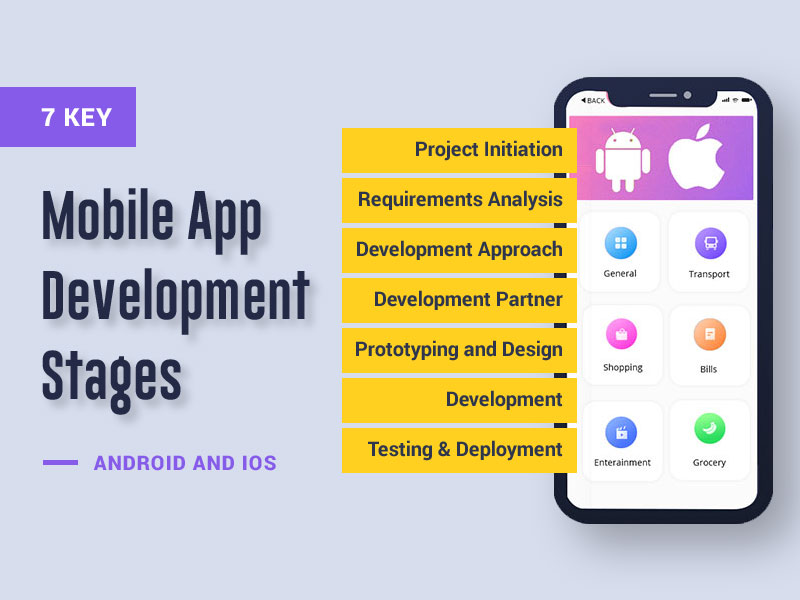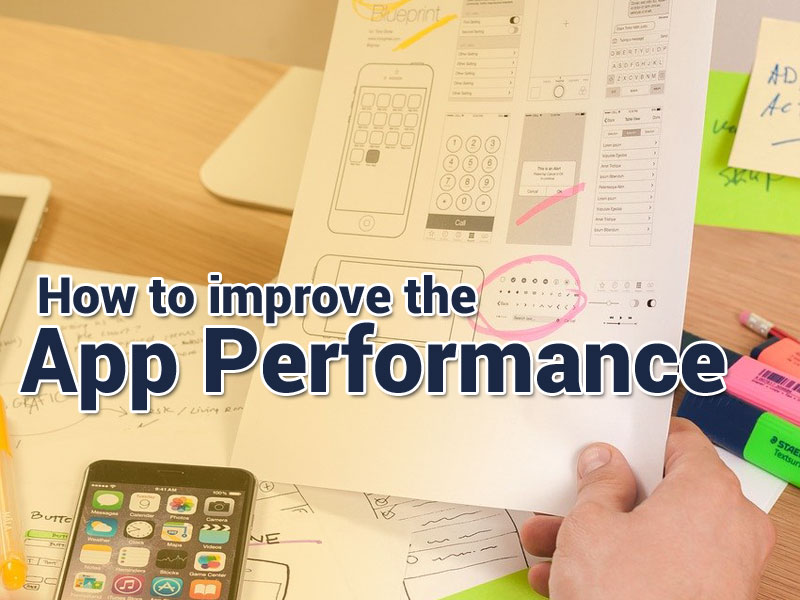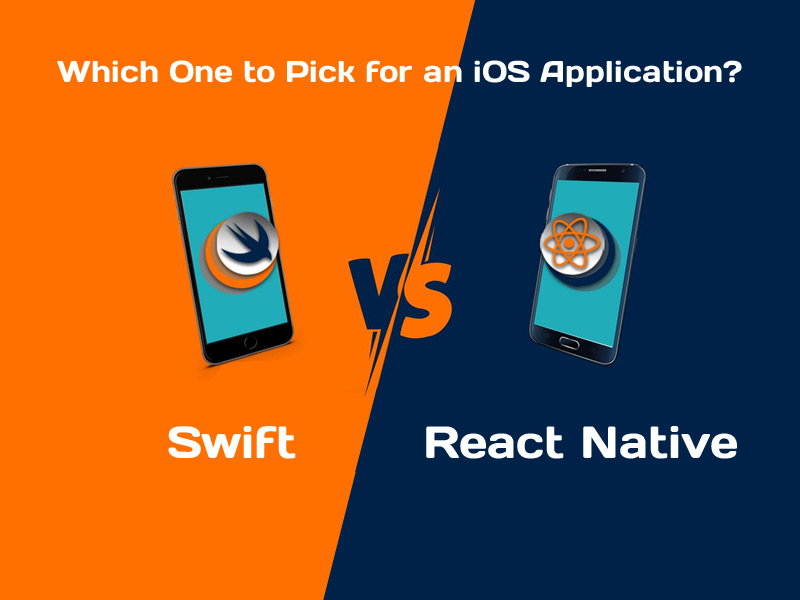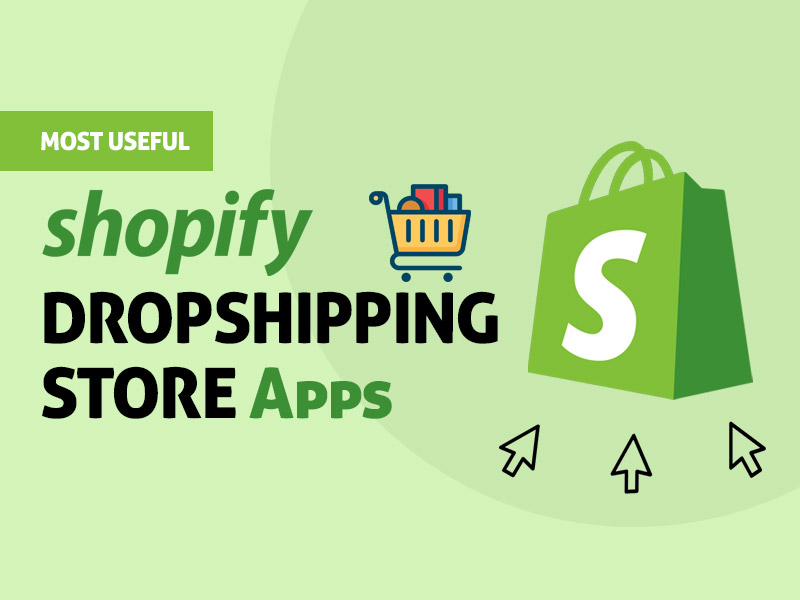Since customers now prefer mobile apps and websites over calls and physical stores, companies know the importance of mobile app development. Having an online presence gives companies a competitive advantage in the market and allows them to get more clients, market the product faster and boost business revenue.
However, developing an app is a challenging task that takes lots of time and resources from the business. While you will probably need an experienced development team, understanding all stages of the process may help you clear the goals and identify the resources you need to build the final product.
We created this article to show you the 7 key stages of app development for the two most common platforms – Android and iOS. The entire process can change depending on many factors and development approaches. Still, it usually means leading the project from the start of the project to the final point when a dev team launches your product.
7 Essential Stages of App Development
1. Project Initiation
The first and most vital stage of the process is project initiation. There will always be project ideation in the first stage, the requirements analysis stage, as well as the discovery phase. As soon as you have chosen a reputable development partner like these app developers New York (or amending this to your local area) they should be able to present the an outline of the app to the project manager illustrating business needs, objectives, and vision over your future product. It is also worth noting that if your product concept is vague and requires estimation of target audience and market trends, making sure it is useful, user-friendly, brings money to your business, and guarantees success, the dev team will also provide a discovery phase service.
2. Requirements Analysis
Once the concept is created, it is time to collect business requirements that should be done professionally and make sure that your users will get the solution to their problem. Requirements are divided from high-level to detailed, which relate to business needs, user needs, and then system requirements that are essential. The last thing is what the product is going to do, how well the system performs, and whether it suits the target audience and user point of view. Therefore, once all requirements are identified, your partner should perform project estimation, meaning identifying timelines, costs, resources, and so on.
3. Choose Development Approach
Once all steps mentioned above are done, you need to focus on choosing the development approach. Today’s tech market offers two options: coding and no-code development, where both provide quality results but differ in speed and cost.
No-code development is considered to be the best choice for startups, small companies, and short-term projects. That is because a qualified no-code development company delivers quality results within days and weeks, while regular development always takes years. In addition, no-code is a cost-efficient solution, allowing businesses to save money and time, which are two factors for success in this challenging market.
4. Choose the Development Partner
Once the approach is chosen, it is time to choose a development team. It is recommended to perform an analysis before choosing the right partner. You have to create a list of suitable development providers and check their experience, reviews, timelines they can commit to, communication skills and get to know the experts responsible for your project. Then jump on a quick call with the partner to estimate the project and check what budget suits you.
5. Prototyping and Design
Prototyping in the development process is a great and fast way to draw out the first design sketches for your future product. Your prototype should direct to a common vision with a user over how the software will feel and what iterations are going to be.
For this purpose, you will need to hire a UI/UX designer responsible for drawing the app’s design, adding the best features, transitions, animations, illustrations, and styles to ensure the application feels smooth in use and is highly convenient for navigation. Once UI/UX designers develop a solid prototype and map the user flow, you will need to drop the UI part to production. To put it simply, you will be ready to start coding.
6. Development
Finally, the critical part in the stages of app development. Based on the approach and team you have chosen, the development can take days, weeks, or years. The key thing in successful development is Agile methodology. That is because this method helps dev teams to test every feature and every new part of the product without stopping the process and quickly fix bugs that are found.
It is also advised to estimate the timeline before starting the process, although the time may change. You can estimate the project timeline and discuss it with your development partner to get a clear picture and have enough time to prepare the app for launch and marketing. You can also stay informed about the latest changes in the process and how development goes if the development team offers daily calls.
7. Testing, Deployment & Maintenance
Once the app is developed, it is time for testing. Even though some tests could be done during each sprint, the final testing is also essential if you want to get a quality product. Once testing is done, the final app is ready to be pushed for final release into the marketplace where customers can find and use it. Your dev teams should also check the deployment process to reduce possible issues. When the app is deployed, you should ensure further maintenance of their product and make sure:
- Bug fixing
- Code refining
- Enhancements
While most businesses believe that launching the app is the final step, you should also know that you will need to timely update your software, add new features, fix bugs mentioned by users, and use the latest technologies to keep the app interesting and useful for customers. It is essential to meet clients’ needs and requirements, ensuring app flexibility and bringing value to your users.
Final Thoughts
Global digitalization is the key driver of the increased number of mobile apps developed by various businesses. However, developing software is a tough process that requires lots of money, resources, knowledge, and time. But knowing the stages of app development and what steps are needed to build a mobile app and some tips that can make it easier and cheaper can help companies get better results out of their investments.







